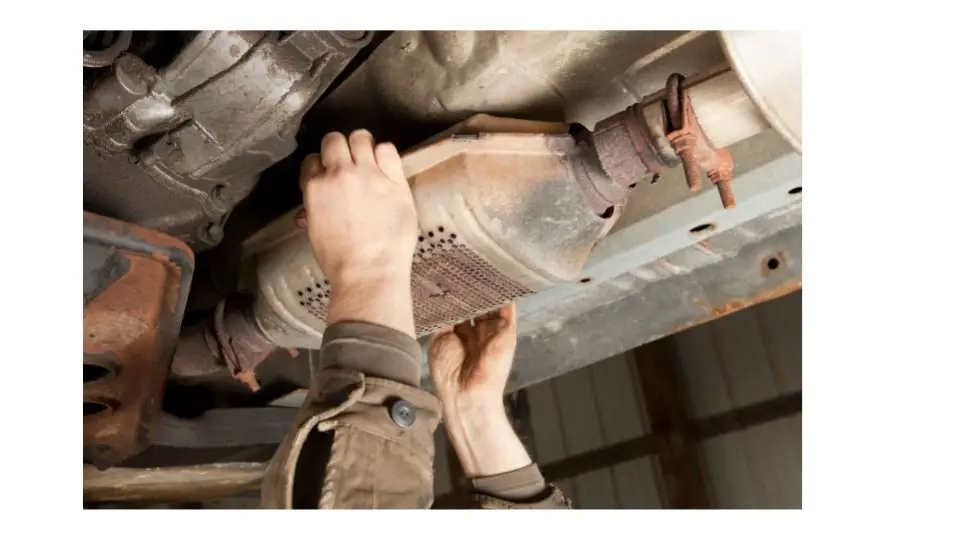Catalytic converters were developed as a response to the need for a cleaner environment through reducing dangerous emissions from vehicles. They first came out in the 1970s specifically for gasoline engines.
Do diesel engines have Catalytic converters though? We are going to explore this topic in this article. Diesel engines are known to be stronger and more efficient than petrol engines.
Their major drawback over the years has been they were clunky and produced toxic emissions. As the world began to realize the impact of some of these emissions on the environment and on human beings, they started developing means of reducing emissions.
The Catalytic converter was one of the devices developed to help with emissions that came from automobile engines. It worked by oxidizing dangerous emissions such as carbon monoxide and nitrogen oxide converting them to carbon dioxide and water which are both harmless. This process was able to convert about 99% of these gases.
In short, yes diesel cars do have Catalytic converters fitted into them, however, Only Diesel Vehicles that were produced from the year 1990 and upwards have catalytic converters.
Do all Diesel Engines Have Catalytic Converters?
Older engines do not have this technology installed on them especially if they predate 1990. There were some technological advancements made to help reduce emissions prior to this point though. Newer engines being built especially for the European market all have catalytic converters installed. As technology improves and more advancements are made in this area, it remains to be seen whether further improvements can be made in emissions reduction.
The Purpose of a Catalytic Converter
I’ve explained the reasons why a Catalytic converter exists but we want to dig a little deeper into its workings. The cat is placed along the exhaust pipeline either close to the engine or a little further out.
The Catalytic converter is lined with ceramic and some precious metals (which is why they are stolen often). It heats up to high temperatures and as the exhaust fumes pass through it, they are oxidized leading to their molecular structure changing.
This process greatly reduces the toxins within the fumes making a huge impact on the environment. To show their commitment to the cause, since 2011, European countries made it a requirement that cars sound in Europe should have a cat installed. The Catalytic converter only became available for diesel engines in 1991. Prior to that, they were only available on petrol engines.
Improvements in Diesel Engine Performance and Emissions Reduction
Over the past decade, great improvements were made to the diesel engine. They are now smaller, cleaner, and more efficient. They are engineered to be efficient in their operation while being a lot more environmentally friendly.
Even before the catalytic converter was introduced on the Diesel engine, some technological improvements had been made to the engine to make it cleaner. The first of these was the DOC (Diesel Oxidation Catalyst) which converts Carbon Monoxide to Carbon Dioxide and water.
They were initially introduced in 2000 and became standard on all vehicles in the EU in 2011. Next up was the DFP or Diesel Particulate Filter. This device was developed to further lower emissions for diesel engines. It traps soot emissions which lowers the mass of diesel particulate. It also oxidizes some of the hydrocarbons that are absorbed on the carbon particles.
How Does a Diesel Catalytic Converter Work?
A Catalytic Converter works by introducing oxygen to otherwise harmful gases and neutralizing them in the process. Diesel fumes contain Carbon monoxide and NOx which are harmful both to humans as well as the environment.
The oxidation process turns the gases into diatomic nitrogen and water. The converter does this by generating high temperatures as the fumes pass through it.
Catalytic converters contain ceramic and trace elements of precious metals that make this process possible. The precious metals in the Catalytic converters are the major reason that they rank as one of the most stolen parts on a car. This is common on vehicles with high clearance where it’s easier to get under the vehicle and steal it.
Depending on the make and model of the vehicle, the Catalytic Converter is either located close to the engine or further out along the exhaust mechanism.
Having it closer to the engine allows it to benefit from the heat generated by the engine. Having it further out means it has to generate its own heat making it less energy efficient. Placing it that further out though gives it more longevity as it is not exposed to the extreme conditions of the engine.

Robert Anderson is a world class motorhead who rebuilt his first carb at age 10, his first engine at age 15, and completed his first full hotrod build when he was just 18! Previously, he has ran a part warehouse, delivered pizzas, and managed the service department for a $20 million/year revenue dealership. Robert knows cars like few others and he is passionate about sharing his knowledge.

